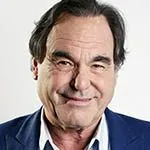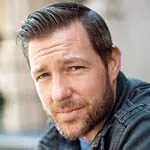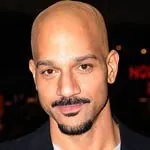When I began my filmmaking journey with my first feature film, This is Meg, I had no idea what camera I’d be shooting with. I had access to both RED Cinema and Arri Alexa Cameras for free if I wanted them but I choose against using them on this film for the following reasons:
- The infrastructure need to make those camera work was complicated and expensive (even if you are getting the camera bodies for free)
- I wouldn’t have the freedom to shoot whenever I had the cast available. (we shot over 6 weeks)
- The “footprint” of those cameras do not lend themselves to run and gun guerrilla filmmaking.
- The Post Production workflow would be costly and high-end RAID drives are expensive.
- Production Insurance would be needed and that’s expensive.
So I looked around and choose the remarkable BlackMagic Cinema Camera.
“But Alex you are nutz! You could’ve shot on a RED or ALEXA and you choose a BlackMagic Cinema Camera?”

Yes, I did. For a few reasons:
- I could own the Blackmagic Cinema Camera, play with it, test and experiment.
- No production insurance.
- Small footprint for those “guerrilla filmmaking” moment out in the streets.
- Amazing post-production workflow (I edited and finished This is Meg on the DaVinci Resolve, more on that in the podcast)
- I could affordably pimp out the rig and customize it for my shooting needs.
- This is Meg is a small character-driven indie film, shooting with RED or ALEXA would’ve been overkill.

Shooting with the Blackmagic Cinema Camera
Now I’ve been a colorist for over 10 years and the image quality of RED or ALEXA are superior to the Blackmagic Cinema Camera but you need to choose the right tool for the project.
The Blackmagic Cinema Camera gave me the freedom that the others couldn’t and the Blackmagic Cinema Camera is BY FAR the best bang for your buck. Speaking as a colorist and the director of photography of the film, the image quality is stellar. You just need to understand the camera’s strengths and weaknesses.
Here are some tips when shooting with the Blackmagic Cinema Camera 2.5k.
- The Blackmagic Cinema Camera needs a ton of light.
- Make sure you shoot at 400 ISO unless you are shooting nights. Try to always shot 400 ISO.
- Record with a minimum of 240gig Card (about 46 min of RAW).
- SHOOT RAW, not ProRes 422 HQ!
I also decided to shoot with the Blackmagic Cinema Camera because of the amazing RAW Cinema DNG file it produces. I shot with the Blackmagic Cinema Camera 2.5K, not the 4k version. The 4k would’ve been nice but the cost in media and hard drives out weighted the extra pixel. I also knew I’d be mastering in 1080p and blowing up to 2k for the DCP deliverable.
You can shoot ProRes 422 HQ but I’d suggest shooting RAW because if you don’t light the scene perfectly having that RAW Cinema DNG file can really get you out of a pickle…trust me!
I go into great detail on how I put this rig together in this week’s podcast. I share tips, tricks and real-world stories of what worked and what didn’t. I also talk about the post-production workflow I went through editing in DaVinci Resolve.
Right-click here to download the MP3
Alex Ferrari 2:30
So let's just go back let's take it back before we get into it. Let's take it back a little bit to so many months ago when I decided to make this movie. I decided to make this movie in April. We are now in September. So in April I decided like I'm gonna go make a movie and I had I owned a Blackmagic Cinema Camera 2.5k which I use for some you know, internet stuff and some minor little things. So that's why I never got a 4k camera at the time because it was a little bit just didn't make sense for like YouTube and stuff like that at the moment. So I had this camera I was like well, let me know. Let me let me see. Let me start testing it. So I started testing it. I have a set of rokinon lenses, which I'm going to actually go into a whole other podcast about the lenses and about where to get them and all that stuff in another podcast. But I had some broken on lenses I had a sigma 18 to 30 zoom lens, and I start playing with it and since I'm a colorist, I started throwing it up on the da Vinci and seeing what I could do so I started pushing the camera and seeing what I could do with it. And I was really shocked at how beautiful the images came out. You know, and you know I've I've worked with Alexa I've worked with reds. I've worked with phantoms. I've worked with a ton of different high end cameras, but this little camera was really impressive. And for what it was, you know like for the it's by far is the best bang for your buck on the market. There's no question. I'll argue anybody that for the money. This is the best image you can get for the money and have the ability to have a raw file. color grading. It's amazing. It really really is remarkable and I'll talk a little bit about the post workflow about the camera and a little bit towards the end of the episode. So anyway I decided to put together I said, you know what I'm going to shoot with this camera. So I've got a lens package that I've had, and a couple tips I wanted to give you guys on when you're shooting with a Blackmagic Cinema Camera. And by the way, first of all, people asked me why didn't you shoot with the 4k version? or Why didn't you 2.5 simple answer was I owned a 2.5 I didn't want to spend extra money on getting a 4k and then also the amount of hard drive space and media that I wouldn't need to purchase to have to get just to be able to work with all the workflow considering I was the DI t i was assistant editor I was everything I needed to simplify the workflow for myself. So what I decided to do is just shoot it a 2.5 so let's just put this put it into perspective, if you get a card, let's say a 240 gig card, an SS SD card is what they what the Blackmagic shoots on it that gives you at raw 2.5 gives you about 45 minutes now if I would have shot 4k that 45 minutes would turn into 27 minutes and then I would have had to purchase more of them or purchase larger ones so like my 48 I have a 480 gig card as well that gave me about an hour and a half of raw which is pretty amazing. But they're expensive man they're like 100 and some dollars each now mind you not as expensive as a red or an Alexa such situation. But you know for a very low budget kind of movie I want her to kind of make it as bare bones as possible. And also I wanted to kind of create this experiment to see if I could create a full blown feature film that looks looks good at such a low budget with a you know a camera that's not known for making cinematic images not my Don't get me wrong they are but like you know nothing compared to an Alexa or a red so I wanted to see what I could do with it. So I said screw it I'm gonna do 2.5 it just made more sense for me workflow wise. So right now just so you guys know I shot apart six terabytes of footage for this little little movie shooting red I mean shooting RAW and so if I would have shot 4k, it would have been 12 terabytes now 12 terabytes you know, like oh, I would just get a couple of you know, eight eight terabyte drives and you're good to go. Yeah, but you know, if you want redundancy, if you want to have at least two copies of everything, which is what I have, plus have an array drive. So if things crash, you have protection, things like that it starts getting pretty pricey. So a six terabyte to 10 terabyte situation becomes a lot a big, big big difference especially at this price point. So a couple tips. This camera loves light lots and lots and lots of light. So make sure you always give it plenty of light it holds the highlights very well. And it also digs into the darks very well I was surprised at how much how much it kept the latitude on this is you know on the paperwork it says 13 stops. So you know and I wouldn't push it that far. But if you put if you shoot it down the middle and you have probably you know three or four stops real clean latitude. It's pretty remarkable and you also want to shoot it at a 400 ISO I know they say it's rated at an 800 so but both Austin my my second camera and gaffer and myself both figured out that 400 was the way to go and and we could tell the difference so we definitely shooting 400 ISO now, by the way, anyone who's listening to this and if I'm talking gibberish to you guys, because you don't understand everything I'm talking about. That's fine. I'm just gonna go and go over a little bit of this. I'm not expecting you guys to know everything I'm talking about. But I wanted to at least put the information out there and there's a little bit a lot more detailed information on the post at the NFL muscle.com forward slash zero 98 so the other big thing is do not and I repeat Do not shoot a feature film in pro res four to two HQ. You will be tempted to shoot in progress because that 480 gig media card that I had would carry I think it's like five hours of progress on that one card. So you're like Oh man, I could just shoot all day on one card. Yeah, that's all great and dandy. But the problem is that you have to shoot that movie perfectly. So your lighting has to be on point you cannot mess up. The beautiful thing about shooting RAW is that if you do make mistakes on on the set with lighting, not enough lighting, not enough time, which I guarantee on a low budget movie you will make mistakes, it happens I made mistakes. But because of the raw file the raw file allows you to fix those mistakes. If you would have shot pro res if I want to shop pro res in this movie, there's a lot of shots that I probably wouldn't have been able To work with purely because of time light, not having a full grip truck, and many other things that I had did not have on the shoot. But shooting RAW saved me. So I would definitely suggest shooting RAW and that is one of the big, big selling points of the Blackmagic cameras is you can shoot RAW even the pocket camera which I'll talk about in another episode, which I don't own, but I've heard is great and you're able to shoot RAW in any time you can shoot RAW, that is what you want to deal with. And then I'll talk about the workflow Honestly, I'm going to do an entire podcast about the post workflow, how I worked in DaVinci, how I've colored this intervention, how I edited the entire movie in da Vinci, I'm going to do an entire workflow of a podcast about how I did that. But this one's about building this camera rig. So first things first, obviously, you want to get a Blackmagic Cinema Camera 2.5 you can get a four. And that's no problem. But understand that there are just going to be those little workflows like on the next movie I do, I'll probably go for purely because I now have the infrastructure of purchased the hard drives that I need, things like that, that I can handle a bigger workflow. Since I was doing this all from the beginning, I just had to kind of play it safe and didn't want to get caught up even myself and pose even though I own a post situation, I didn't want to get myself caught up and wanted to make things as simple and easy as I could buy it while still maintaining the best image quality possible. So get yourself a black magic, again, links for all of these things are on on that on the URL, the media that I used Kingston digital, I got a 480 gig SSD card, and I got a 240 gig, most of my cards were 240 gigs, I had like four or five of those and had one 480 gig, which I used for the big long night. And they run anywhere from 80 bucks for $81 right now on Amazon for the 240 to 145. And they kind of go on sale every once in a while. But those are those are the prices. I mean, that's really, really cheap considering if you try to price out what read media costs, or what Alexa media costs. It's pretty remarkable. And also, just so you said you guys know I had access to full red dragons. And full Alexa that would have been given to me for free to shoot this movie because I have friends and I have a lot of people that wanted to help me with this movie. But I decided against it. Now I know everybody listening like Alex, are you crazy, you could have shot with a red, you could have shot with an Alexa, it would have been so much better. I'm like, Yes, the image might have been better, arguably, it definitely would be better. But for the kind of movie that I was trying to make, which was a low budget, indie drama, it, it was overkill. And I'm going to give you some examples of why I decided to go with a smaller camera that still gave me amazing image quality. One, I can own the camera, I can play with it, I can test it. And I could do all an experiment and do all sorts of different things where if I would have been given this camera I would have had to have shot. First of all, our schedule was a six week schedule, meaning that I only shot eight days within those six weeks because we work in around actor's schedules. So because of that we needed to do many different shooting experiments, things like that no one was going to give me that cam those cameras for six weeks just sitting around in my house so I can play with that's not going to happen. So that was one of the reasons I wanted to do it because I was the DP on this movie. And I wanted to kind of play with it, test it, see really what I could do kind of beat the camera up. And I wouldn't have been able to do that. If I didn't have this camera. Another big point no production insurance. I didn't need any rental production insurance. So anytime you go to these big houses that are going to give you $100,000 package, guess what guys, you need insurance, and I did not have the money nor did I want to go out and get production insurance. Again, I was trying to make this as simple of a process as possible. And that was a big selling point. Another thing is it's a small footprint. Even that big rig that you guys saw is a smaller footprint that then a read package or an Alexa package on those guerilla filmmaking moments that you're out on the streets, possibly stealing shots, possibly going into places that you are not allowed to shoot to get shots, having a big rig is going to be a problem. That's why the DSLRs have been some popular because a lot of people go out and no one even knows you're shooting a movie. So this camera I you know when I had to go into more heavily populated areas where I didn't have particularly a permission to shoot you having a smaller rig helped dramatically could not have done that with an Alexa. The other big selling point is amazing post production workflow that I was able to just bring it into DaVinci Resolve which is owned by black magic. So the workflow is super seamless. I can edit raw, I can color grade and finish my movie right in there. And also the affordability of the pimping out of the rig as I like to say and customizing it to fit in My shooting needs was so much more affordable. Even if I would have gotten a red Camera Raw by itself. To try to get a rig, you would have to rent a full blown rig. But if you're going to try to purchase those kind of ancillary products to kind of help or actually make the damn thing work, you need all these kinds of things to make it work. It's super expensive. So shooting with a black magic, I was able to create an entire rig, professional wonderful rig that worked probably on it, I think I don't know what the final total was, but was under 2500 bucks, not including the camera. But just a rake was under 2500 bucks. In probably less than that. Without and probably about two grand. If you include the media and things like that, then it'll probably be around 2500. But that's it's insane in the camera world. That's insane. And I want to go over all of those little nifty tricks and vendors that I found that helped me get to this high quality rig at a very low cost. So we've gone over the medium. The next thing is the camera cage, the camera cage is something that actually wraps your camera and protects your camera from other from, you know, dings and lumbung bangs and stuff. But it also allows it to give it a little bit more weight. And it gives you ability to start building your camera rig, you can start attaching things to the rig itself because it has the the hole that you can kind of screw things in on and kind of build this kind of Frankenstein monster of a camera rig, which completely is unique to us. So when cameras when you see camera guys and camera rigs out in the world, those were built by the camera guys themselves are very, they're not stuck. They're all very specific to the needs of that camera person that cinematographer that production because that's the way it works. So that's what I wanted that freedom at a price at a definitely a price point. So I use cam tree hunt pro cage, which is for the Blackmagic Cinema Camera. Cam tree by the way, you're going to hear their name a lot. Now I did not get paid a full disclosure did not get paid a dime. I've never even been in contact with these people. They've never contacted me. I love cam tree products, they are the most again, I use this term a lot best bang for your buck on the market period. And they have dollies they have just everything a filmmaker would need at a very affordable price and built pretty solidly is it as solid. Alright, so let me just let's just put it this way. This this, this rig is $237 a standard camera rig, even on the cheap end is about eight and $900. And then if you start going into the more professional world, the higher end world you're talking three grand two grand, sometimes up to even five grand for these kind of rigs. This rig was made of metal it has has rods, you're able to put two, two sets of rods in one at the bottom and at the top. You've got two wooden handles a remote switch, which by the way saved my ass. I loved having my little remotes which basically just grabbed the handle and I hit the little red button I didn't have to like fumble to hit the record button on the camera. It actually had a remote cable which was great. You've got a handle with a top where you could actually mount a mic if you wanted to get like some real you know, quick ambient sounds. And it's just brilliant. And you can just slap it right onto your tripod. And you're good to go. It's so amazing. It really really is. So it works this this rig works for both the 2.5 Cinema Camera and the five and the 4k as well. The next is the preview monitor now, preview monitors as you know are obscenely expensive. And there's ever I mean you could spend five, seven grand on a preview monitor I mean, the red preview monitor alone is like three grand I think or something along those lines. It's pretty nuts. So I use the free world. Va f w 7597 inch Ultra HD now again don't have Don't worry about writing all this stuff down guys just go to the URL, indie film hustle calm for slash zero 98 and they have I have everything there. So I'm just kind of going over everything. This little monitors 149 bucks, and it works perfectly. Is it a 1920 by 1080 image. No, it's a 1280 by 800 resolution image, but it's vivid, it's clear and it's it's nice. It works perfectly fine. I'm not calibrating off this monitor I just needed something else to see comes with a hood. This little package comes with an arm comes with an HDMI cable comes with a little mount on it so you can just mount it directly onto your camera. It's really great. It's awesome. It needs a battery, which I'll talk about in a minute, but it was awesome. It's great for steady cams is great for low little rigs. It works wonderfully. It really really worked wonderfully for 150 bucks, you can splurge and go to 250. They have different versions. But this is the one that I use. I was able to mask out my 235 aspect ratio, which is what I shot Megan, which is in a 235 aspect ratio. It's pretty good. You'll see you'll see pictures of this rig, you'll see the pictures of the monitor throughout throughout the post. It's pretty cool. Now the one big thing you need is though this monitor and that's this is where this is where people get stupid. The the Blackmagic camera has a BNC cable out it does not have an HDMI output. So you need to get an SDI or not BNC excuse me an SDI out to an HDMI converter. Now usually these converters are extremely expensive, especially if you use the Blackmagic one specifically because it's louder. I don't know how much it is, but it's it's pretty expensive. I found one for 2999. It's wonderful. I attach it to the back of the monitor, ran the cables, and it works perfectly. works perfectly 30 bucks. It's the port of peche SDI, just check the link on the on the post. It's really really great, wonderful. The other thing I also needed was obviously a BNC cable BNC SDI, it's kind of the same thing, but the cable itself 899 890 these are all Amazon everything I got I got it on Amazon. Then I got a power power source for the converter, that actually cost 20 bucks, which is one of these portable chargers where you can quick charge your iPhone, and quick charge, like your iPad, I got it for 20 bucks, you slap it on that thing will last all day. It's wonderful. And I also use that to run my my audio setup my Tascam. But we'll talk about that another day. Great little trick. It's just it just works. It works great. The other thing I bought was the portable protective travel case for the monitor. This is not a luxury guide, you absolutely need to have this, it's 20 bucks, it's 20 bucks, it protects it you can put your batteries in there, you can put all your everything regarding the monitor you can put in there, it's great for 20 bucks. The next thing is the batteries. Now you do need batteries, and especially these kind of standard Sony batteries, which are the lie lie on DC batteries. They're like 20 bucks for the small 121 98 for the small ones. And then the bigger ones, which lasts a little longer than little fatter. They're 43 bucks. And they come in a package of two, with with a charger and a car charger as well if you get caught out there in the world, but it's really great, you slap it on the back and that I think I changed it with that once I had the big one on I think maybe on the longest day, we had to swap it out. But usually generally the last all day, it was just great. So there you go. Now the next thing I built out was a follow focus, you definitely need a follow focus. Now follow focuses can get stupidly expensive. And if you know what to follow focuses guys follow focus is basically what you attach to these rods that you build in your package. Again, I have pictures and videos of all this on the post. But you you attach it on. And then you can connect it to the gears of your lenses. And then based on that you can follow your focus. And I pulled all my own focus on this movie. So I'm actually quite shocked when you guys watch the movie, you'll see certain things that are ranking focus and stuff like that I did that all on the fly. And don't think I'm an expert or anything like that I just chose the best moments while I was editing. It's also a benefit of being an editor, you can hide all your mistakes, but I chose the up photogra dP 503, quick release, follow focus, which means that you normally when you put on, you know start building up rigs, if you can do anything that's a quick release, meaning that you can just snap it on and snap it off as opposed to just running it through the bars. And then and then if you like let's say you stack in two or three things, which you will on the on the rods, then it let's say you want to pull out the quick the follow focus because it's not working with your lens set for that lens that you have. You're like shoot so you have to pull everything out. But if you do a quick release, all you have to do is just open it up and pops right out. Quick release. I did a couple quick releases in this in this package, but that was great. It's 199 bucks guys works great. Is it the best thing in the world? No. Is there? Are there better ones out there? Yes. Does it do the job Absolutely. Never, never failed me once on my entire shoot. So that's the thing I'm trying to tell you guys. Don't always look for the shiny Oh, this is the best. This is the best I need the best. Just find what works. And it might work for one or two projects and then you move on to another piece. But you can't you know if you if you're going to start building up a rig that's going to last you for the next 10 or 15 years. Then you're going to talk about 10s of 1000s of dollars. But if you buy smart and check your reviews and listen to things like I'm talking about someone who's actually shot with everything, I'm talking About it's gonna be very helpful to you with any productions or films or anything that you do in regards to gear in the future. Now the next thing is the matte box the matte box is one of easily one of the most expensive parts of a rig I mean and I it took me a while to find this man it really did but the Find a solid, there's a lot of cheap there's a lot of cheap matte boxes out there that are all made of plastic and things like that. You want to find something that's made of metal that's a little bit sturdy, and that can do what you needed to get done. And there's so many aftermarket matte boxes that are built out for DSLRs that could be used for the black magic and you just have to find the right one. What I chose was cam trees swing away wide angle carbon fiber matte box. This was this is a great little a great little matte box that comes in its own little like carrying case you know it's plastic carrying case has all everything you would want it's a two stage matte box now as far as stages are concerned, two stages means that you could put one filter on or two and they actually both rotate so you can put a polarizing filter in there for for your your outside shots if you want to use a polarizer so having a two stage always get at least two stages guys if you get one stage you know I always got to get two stages but it was great. It worked wonderfully. And I loved it. It worked like it just worked like a charm for me and it's 245 bucks. I mean seriously it 245 bucks. It's remarkable. It really really worked really well for me and I loved it so that's my matte box suggestion. Again will it last me five or six movies I don't know. But it lasted me this movie and it'll probably last me the next movie. And it's it's pretty robust for what it is. You know I the closest thing I've been found to it was like like 15 $100 that was you know or 800 $900 that was even remotely close to what this gave me. And for the again best bang for your buck. So the cam tree swing away Oh and by the way, the swing away aspect of things is really important because if on set, you put it all on you mounted all into the rods and it's all set up. If you got to change the lens. If you don't have a swing away you got to pull the whole matte box off it slows you down. But with a swing away You literally just hit a little little lever and boop it swings out, change the lens pop it right back in and you're good to go. Well well worth it. Alright guys so the cam tree swing away carbon fiber matte box. Now this This is by far the most important piece of equipment I purchased on my camera rig. I call it the back saver. This is the camera the cam tree shoulder rig and it is plus support rod and this is so important because I was I was gonna do this entire movie handheld. And you know having this kind of rig on your body, he kills your back it'll kill your back if I if I you know the few times that I actually shot without the bar. Without the support rig. I was lying. within five minutes I was like oh my god. What this does is it basically gives you a weight belt that you strap on to your to your waist. A pole like kind of movable like it's kind of like a little mini tripod that you mount onto the camera rig. And you can kind of if you need to go up high, you can go up high, you can go down low, you can go low, it's pretty crazy and the stuff that I was able to get because of it it was almost like a dolly move sometimes because I was able to just really pivot as is really strong rubber core that allows you to kind of pivot anywhere you want and it saved I mean I literally could sit there all day which I did with the damn thing on and it just did not bother me as much Don't get me wrong I was still in you know I was still sore and in pain, shooting with it. But without it I don't think we would have been able to shoot it. It just it was so wonderful and the price best, the best 126 bucks I've ever spent. And trust me, if you're gonna do any handheld work at all, you need to have this and it works with anything it doesn't have to be. It doesn't have to be a chemistry rig or anything like that. You could use that any place that you have some rods, it'll plug right in and you can use it really really amazing rig guys so definitely use that. Now I keep talking about camera rods, camera rods, basically these big metal tubes that you can kind of slide into rigs to mount stuff on to. So I use the 18 inch rods because I wanted to have a big long handheld rig. And again, you're building this rig for what your production needs. So I knew I was gonna shoot a handheld movie. This was never once on In the entire movie was never on a pair on set a tripod or anything on a dolly it was always going to be handheld it was the style that I was going for for this movie so I had to build a rig that was that was appropriate for what my needs were for the film. So having 18 inch rods which are huge By the way, the 24 bucks I used the small rig, black aluminum alloy and you can get into carbon fiber you can get into aluminum and all that you can get into all the details dude guys this worked fine. You know you can get the more expensive ones if you want but these work perfectly fine. And it allowed me to put on a pad in the back for my shoulder which I'll get to in a minute and allowed me to stack on the the matte box the follow focus the rig for the for the shoulder rig weight thing, the support of the sport rod, as well as the rear the arm for the the preview monitor which I'll show you how I did that in a little bit as well. So it was it's invaluable. You definitely need to have them but again, you don't need to make it 18 inches you can use five inch, six inch, I think six six inch, eight inch 12 inch 1214 I think they have a 16 and an 18. So it just depends I chose the 80s because it made sense for me and it worked really really great. The next thing I chose that I needed for my rig was camera handles now I know you're gonna say well, you already had handles that came these beautiful wooden handles that came with the the camera cage but I decided I wanted to get a little bit I wanted to get lower so I can go because up holding it up high the the bodyweight wasn't proper for me. So I wanted to have something a little bit lower base so it kind of balanced everything out a little bit better. So I got the cam tree hunt, quick Mount 15 millimeter Rosetta handle set. It's 110 bucks. It's great and again you'll see pictures of it in the post. It's a quick release again so you could just slap it on boop boop boop slap it off and it was great. And you can adjust it to whatever you want. So I had one a little farther than the other one. And I was able to handle it so the way I set the the rig up is I had one of the wooden handles the other hook wouldn't handle on my on my right eye kept that one because that was the one that had the remote button. The other one I took off never used it and then I had the two handles at the bottom. So I basically held the top wooden handle and then held the bottom left handle so left handle bottom right handle wooden top and I know it's all sounding crazy in a podcast, just go and look at the video, look at the videos and look at the the the pictures and they'll be a lot more clear this way. But anyway, those two things really worked well for me and I was able to maneuver and move the camera really really well. 110 bucks it works. It's solid, it worked really really well. Now another really expensive part of camera rigs are the batteries to run it not everybody knows that the at least everyone should know that the battery that comes internal with the Blackmagic isn't that great it'll last you maybe an hour hour and a half maybe a running time. So it's just kind of sitting there and you can't pull it out or exchange it that's just the way the cameras built. One of the things that they decided to do so they said look you're just gonna have to get an external battery source now looking into battery sources, you're going to get the V mount batteries which are industry standard. And they you know the the mounts themselves are expensive, you're talking about 300 400 bucks for the mount. This is just something to plug into the camera. So then you could purchase a battery, the battery mount that up now it is robust, it is great having these v mounts. They're wonderful, but they're expensive and if you're doing something on a really low budget like I was, and again I wanted to see how low budget I can get and still have it work as an experiment. And I found this amazing little company called juice box juice box batteries. And these guys are amazing for 100 bucks by the way those batteries those v mount batteries one to $300 sometimes more per these little juice boxes because my camera was small and not a red or an Alexa. It worked beautifully. And I'll show you and I'll talk to you about how I was able to mount them it actually comes with a mount on it's like a little screw you can actually screw it into the side of the camera rig and you're good to go and it works perfectly. But I wanted to be a little bit more clever a little bit more cool. And I wanted to have my own mounting system like a kind of like a V mount. But on the cheap. So by the way, these batteries run 109 bucks and they're built for the Blackmagic Pocket cameras as well as the production cameras. They will last my the camera around three to four hours each. So I probably most of the time never even on the day. My biggest day I never ran more than two batteries. So they basically just cover you for the most of the data and when the when the cameras not being worked on or braking or something I turn the camera off. Don't let the camera just keep running and running and running. So it's great and the wonderful thing about it is it actually juices up the battery side the camera. So when you run out of batteries on that battery dies, the battery inside the camera picks up so you never get a loss or a drop or like oh my god, which you would have on a red or an Alexa because they don't have internal batteries. This has an internal battery. So if you're on Iran and you stuff like that you still got let's say that you run out of battery, you still have about an hour, hour and change of the internal battery left to keep shooting and I pushed it a lot of times so I could just keep shooting. So it's a wonderful system. I really loved it. I got three batteries, those three batteries lasted me the entire shoot because I just figured I'm like I'm never gonna shoot more than 12 hours. And I'm never gonna have the camera running more than 12 hours in a row in one day. And by the way, once you pull one off, you could just start charging and it takes about a couple two to three hours to charge it up. So it's fine. It worked great. I love that juicebox 109 bucks for the price of one battery. Do you have three and that that covers it so basically it for 300 bucks basically which will cost a normal v mount battery. You can get three of these guys and they're a little bit lighter and they just work really really nicely now what I like to call is the guerrilla battery mount how I was able to mount it to my camera and have kind of like a quick you know kind of like a quick release mount. What I decided to do is I bought a quick release clamp adapter fork as basically like a camera plate, a tripod plate, but it was really small and you can screw it right into the back of I screwed it right into the back of my shoulder pad which I want to talk about in a second. And I then I screwed the other end into the back of the bed the juice box which by the way comes with screw holes built into the battery, they know what they're doing. So you can just you can just attach it to anything. And then you just easily just go pop pop pop in pop out and it was great. It was just wonderful. I have a video showing the entire process in the link in the in the post. And again guys I keep referring back to the post. This is one of those podcasts that is basically helping or giving you a little bit deeper dive into the post because you need to visually see a lot of this stuff to be able to understand it. So this is just kind of like an ancillary piece to kind of help support peace for the post. But I want and I'm going into a lot more detail in the podcast and I did in the post purely because I'm talking and as opposed to writing. So the the in that by the way that cost $7.40 so I bought five of them. I had a couple extra just in case anything went down and you were good to go. The next thing I bought was the shoulder rig it's a cam tree hunt flexible shoulder rig mount which I originally was going to use as a shoulder mount. But like a full blown shoulder mount before I found the the shoulder rig with the support rod. So what I did is you could just I just unscrewed the the actual shoulder pad which was great by the way The Price Is 125 bucks. The you could pull out the pad which was great. It has all sorts of mounting capability on and that's where I mounted the battery and then the arm aspect of it I use to mount my monitor. It was great so I just put it into the rods and then it was a very flexible arm so I could kind of move it wherever I wanted and it just I just screwed it in. And we're out the door It was great. The cam tree flexible shoulder Mount 125 bucks Can't go wrong. So guys, that's basically it. Now you'll see an extra handle that I had I had an extra old wouldn't wouldn't camera handle was like 125 bucks that's rubber and stuff I had it when I owned my red camera and I just had it lying around so I used it and it was really nice having two handles to kind of jump the camera pull the camera on and off but it's not needed. But other than that everything that's on that rig I've just talked to you about. And that's the breakdown of how I was able to build a pimped out camera rig and the final price for this entire rig I'm going to tell you is that unadulterated era dump 20 150 bucks approximately for everything I told you in here including the batteries. So that's including all the batteries including all the media so you can drop the media depending on what your needs are. But that alone right there was like three 400 extra bucks so for say 20 $150 I pimped out an entire Blackmagic rig and then the Blackmagic itself is retails for about 2000 bucks but this is what I did. When I bought it originally I bought the I bought it with by the way it comes with an official copy of DaVinci Resolve. So that DaVinci Resolve retails for about six 700 bucks 800 bucks or I think it retails for like 1000 bucks for the for the retail version so it has the dongle so what I decided to do was I took because I already owned a Vinci but you if you already have you can get a free version of the Vinci and it will handle pretty much almost everything that you would need to done. So you really don't need it unless you absolutely want it but what I did was I took that the Vinci that the Vinci Copy and I sold it on Amazon. Because that's the way I hustled I sold it for I think was 650 bucks. So for that 650 bucks, chop the price down of that camera to 13 150 bucks as opposed to 2000. So there you go just saved you 650 bucks by doing that. And there's not a lot of competition for that, by the way on Amazon, so or you can sell it on eBay as well. But you'll get at least five or 600 bucks for that Da Vinci dongle. And there you go. And if you don't need it, unless you absolutely do the research of what your needs are. For Da Vinci, if you're going to use DaVinci as a finishing or editing program, then do it. But there you go. So honestly, all in for under 3500 bucks, or under 3500 bucks. If you use my Da Vinci technique to sell, you've got an entire Camera Rig package, no lenses, yet lenses are another story. But entire camera package you've got for under 30 $500 that's going to shoot you cinema quality images, that and you're shooting RAW. It's pretty remarkable, guys. I mean, the world that we live in is pretty amazing. So I again, I went out to make this as mag, not only to prove that I can make a good movie that I enjoy and enjoy watching. But that I couldn't do it on the cheap. And do it myself. That's one of the reasons why I mean, I have a ton of cinematographer friends who wanted to dp this for me for free. And I said no, I'm gonna do it. Because I want to prove that it can be done. It was an experiment. And that's what Meg is a lot of Meg was an experiment to see what we can get done on the lowest budget that we could get everything done on. And we did and I can't wait for you guys to see the quality of the images, the quality of the story, which I really love and the performances of the actors and Gil and everybody. But on a technical standpoint, I wanted to see what can be done. I wanted to do something that really it's not done as much anymore, or at all. You know how many movies have you heard that's been shot on the da Vinci, the Blackmagic DaVinci 2.5, edited on the Vinci and colored in a da Vinci and finished in DaVinci. It's it's not something you see every day. So I wanted to prove that it can be done with tools that you guys all have access to. So that is that was my one of my goals in making. This is Meg, I wanted to prove to you guys that it can be done. And hopefully, I've shined a little bit of light, a little beacon that says Holy crap, if Alex can go to this, I can go do this too. I can I can scrounge up to three grand, and get myself this camera package. And by the way, you can also probably get the 4k version. You know, there's a lot of us versions of us things out there on eBay and on Amazon and things like that, that you can buy a little bit cheaper. Now everything I bought, by the way, all this rig stuff was all brand new. So you could try to buy it use if you want to go even cheaper, but I wanted stuff to at least you know, because it was so cheap. Anyway, I was like Screw it, let me just get the new stuff. But I hope this inspires you guys to say shoot, man, I can go shoot this, I can go make a movie. And that's what I really hope this is Meg does for all of you guys, for the tribe. And for anyone who hears the story that it can be done that we can go do it. And there's no excuses anymore. Because I know a lot of you guys out there like oh, I don't have the money to go rent a read or I don't know what I'm doing, I need to hire a dp and I need to do all this and all that, well, you know what you do. And that's fine if you want to, or you can go my route. and educate yourself enough, you know, because if you buy this camera, take six months and go shoot a bunch of shorts, take six months and just start playing. If you if you're starting from scratch, and start playing and seeing what you can do with the camera, push the camera, push yourself, you know, shoot tests come back. That is the wonderful thing about owning your own rig where you can go off and play and do experiments and see what works and what doesn't work. So when you go into battle, when you go on to a feature film, you're ready to go, you're ready to rock and roll. You know, and I did a lot of testing before but I learned a lot every day I shot on mag I learned something new about the lighting about the camera about the lenses about what I can do. And that's even mentioned let's talk about the story and working with the actors and things like that you always learn every time you shoot. But on a technical standpoint, since I was holding so many hats or wearing so many hats on this project, I learned so so much from doing it. So guys, there's no frickin excuse, man. There's just no excuse. All right, I don't want to hear anybody. I just I just talked to a guy who made a movie with the Blackmagic Pocket camera. The pocket camera for God's sakes. Not even the Cinema Camera, the pocket camera, which brand new is 1000 bucks us you could probably get it for five or 600 and there's rigs for all of that too. That cam tree makes as well that you can go shoot an entire movie with the pocket camera. Like that's crazy to me like I'm like shoot man, that's even nuttier. But you know what he got a movie made and he's and he rocked the rock and rolled with it and this guy's off and it looks great. electric cars even with the pocket camera, you can shoot RAW. And that's the key guys shoot RAW, shoot RAW shoot RAW. But I hope again, I hope this inspires you to not sit on your ass, you can go out and make something. And don't wait for like the best and the brightest and I need this or I need that. And one other thing, guys, a lot of people that don't want you to succeed, or a jealous or are just little trolls let's call them that don't want you to succeed or jealous or any of this stuff are going to tell you Oh God, you shoot the black magic, what a piece of crap camera that is. I actually had someone say that to me on this project. And I heard it from a second source. And I said to myself, you know what, man? You could keep talking all your crap, but you know what? I've got a movie made. What have you done? Huh? There you go. That's the best kind of revenge. Just go You know what, it's fine. You can say whatever you want. But I've got a feature made. And I'm going to have two more next year. And I'm going to just keep going. I'm not going to let anybody tell me Oh, it's not the best or what a crap camera or it doesn't have this or there's a crop ratio with your lenses and all this stuff. Look guys, it is what it is. And you do what you can now, one big huge tip guys, I'm sorry, I'm going off on a little tangent here. One huge, huge, huge, huge tip. And I'm going to put this on the on the post is if I was going to buy a brand new camera today, this is what I would do, because I bought a camera that had an EF mount. And the F mount is basically a Canon lens mount. So you can only use Canon lenses on it. So what I would do is I would buy a micro four thirds mount. And you're going Alex but I don't want to use Micro Four Thirds lenses. I'm not suggesting you do. But what you do do is you buy something called the meta bones adapter, the meta bones adapter, this is this magical piece of gear. It's about six 700 bucks, it is quite pricey in our world. But for what it does, it is amazing and I would have bought it if I could have done it but they don't have a Canon Canon mount. So when I buy my next Blackmagic I'll buy a micro four thirds and then just have this adapter live on it. What this adapter does, it gives you another stop of light. So if you have a one eight lens, you end up shooting at a point eight. This is like Stanley Kubrick style lenses lens like light sensitivity, like what he shot with Barry Lyndon think Barry Lyndon was at a point eight or point seven to shoot that sensitivity. That's what it does. It allows it basically takes all of the light available coming into the lens and just focuses at all. Also, there's this little thing called a crop factor. Because we are shooting with the Blackmagic cinema it's not a full full sensor, super 35 millimeter full sensor size. So in other words, when you put an 18 millimeter on the lens, you're not getting really an 18 you're getting more like a 24 millimeter so you get a crop factor so you're not getting everything that the lens can give you. This meta bones helps with that. It helps eliminate much of the crop factors you get bigger images, you get more of what the lens has to offer. It is magical man, I can't wait to start using it. I saw testing with it. It's great the meta bones adapter I'm going to put at the very end as a bonus on the on the post. And if I haven't said it enough, the post for this the show notes for this is indie film, hustle, calm Ford slash zero 98. So guys, I hope this shines light on my camera rig. I hope you get some inspiration out of it that you guys can go out and do this yourself. I mean seriously, go out and do this yourself. Don't let anything stop you guys. There's no excuses, is not 1997 anymore. It doesn't cost millions of dollars to go make a movie. You can go make your movie tell your story. And as I always say you have a responsibility to get your art out into the world because you have no idea how your art will affect another human being. So now we're done with the inspirational talk. I'm off my soapbox now. Episode 100 is coming up guys. And I have I have some things cooking. I think you guys are gonna be really excited to hear what is going to be on that episode. I have I think I have a little surprise for you. I'm not sure yet. But it's Episode 100 It's a monumental episode for me, because I can't believe that I've done 100 episodes and a little bit over a year. Because I'm crazy. And I have I have a life but I don't know how I am able to do everything I do but I do it. Anyway so keep an eye out in the next next week. It will come out so keep an eye out and definitely listen to that episode is going to be a lot a lot of fun. So guys, as always, keep that hustle going. Keep that dream alive. And I'll talk to you soon.
Sign up to receive email updates
Enter your name and email address below and I'll send you periodic updates about the podcast.
YOUTUBE VIDEO
LINKS
SPONSORS
- Bulletproof Script Coverage – Get Your Screenplay Read by Hollywood Professionals
- Audible – Get a Free Filmmaking or Screenwriting Audiobook
- Rev.com – $1.25 Closed Captions for Indie Filmmakers – Rev ($10 Off Your First Order)












